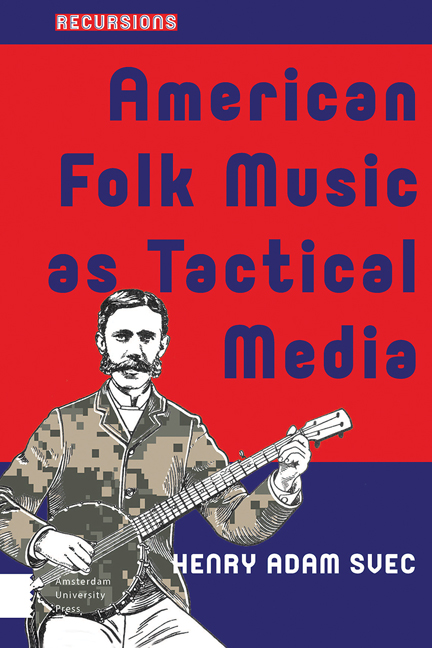Book contents
- Frontmatter
- Contents
- Acknowledgments
- Introduction
- 1 Alan Lomax’s Deep Rivers of Digitality
- 2 Pete Seeger’s Time-Biased Tactics
- 3 Bob Dylan’s Noisy Faces
- 4 A Folk Approach to Imaginary Media
- 5 Another Authentic Folk Is Possible
- 6 American Folk Music as Strategic Media
- Epilogue
- Notes
- Lyrical Credits
- References
- Index
- Frontmatter
- Contents
- Acknowledgments
- Introduction
- 1 Alan Lomax’s Deep Rivers of Digitality
- 2 Pete Seeger’s Time-Biased Tactics
- 3 Bob Dylan’s Noisy Faces
- 4 A Folk Approach to Imaginary Media
- 5 Another Authentic Folk Is Possible
- 6 American Folk Music as Strategic Media
- Epilogue
- Notes
- Lyrical Credits
- References
- Index
Summary
‘A properly administered electronic system could carry every expressive dialect and language that we know of, so that each one might have a local system at its disposal for its own spokesmen. Thus, modern communication technology could become the prime force in man's struggle for cultural equity and against the pollution of the human environment.’
Alan Lomax‘Songs have proved a wonderful, flexible art form, going from one person to the other. It doesn't have to be written down; it can be memorized. And whereas mural painters need walls, dancers need floors, sculptors need warehouses, novelists need printers, and composers need symphonies – songwriters are lucky.’
Pete Seeger‘I also failed out of communication class for callin’ up Every day and sayin’ I couldn't come.’
Bob DylanOf Signs and Singing
The film Inside Llewyn Davis (2013), the Coen Brothers's missive to the mid-century American folk revival, is not exactly of the loving variety. Our titular hero, Llewyn Davis, is capable of competent if not compelling performances of traditional ballads and blues, but he is also hip to the scene's hypocrisies: ‘If it was never new and it never gets old, then it's a folk song’, he says while finishing up a set at the Gaslight in Greenwich Village, halfheartedly genuflecting towards one of his community's peculiar understandings of authenticity. The night before, at the same venue, the flailing folk singer had launched insults at an earnest auto-harpist from out of town, an outburst for which he will now be punished by the performer's husband in an alley out back just as a young Bob Dylan takes the stage. (We can hear Dylan during the scene, singing his own song ‘Farewell’, as Llewyn crumbles to the ground.) ‘Where's your corncob pipe? Are you wearing gingham panties?’ Llewyn had yelled, drunk with sudden fury.
By the film's end, which is tragically also its beginning, it appears that, for now, poor Llewyn has taken to heart his encounter with the junkie jazzman he met en route to Chicago (masterfully played by John Goodman).
- Type
- Chapter
- Information
- American Folk Music as Tactical Media , pp. 11 - 28Publisher: Amsterdam University PressPrint publication year: 2017

